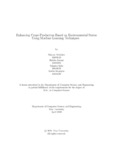| dc.contributor.advisor | Hossain, Muhammad Iqbal | |
| dc.contributor.author | Talukder, Shiyam | |
| dc.contributor.author | Jannat, Habiba | |
| dc.contributor.author | Saha, Sukanta | |
| dc.contributor.author | Sengupta, Katha | |
| dc.date.accessioned | 2021-07-03T19:03:39Z | |
| dc.date.available | 2021-07-03T19:03:39Z | |
| dc.date.copyright | 2020 | |
| dc.date.issued | 2020-04 | |
| dc.identifier.other | ID 16101243 | |
| dc.identifier.other | ID 16101191 | |
| dc.identifier.other | ID 20141019 | |
| dc.identifier.other | ID 16101280 | |
| dc.identifier.uri | http://hdl.handle.net/10361/14731 | |
| dc.description | This thesis is submitted in partial fulfillment of the requirements for the degree of Bachelor of Science in Computer Science and Engineering, 2020. | en_US |
| dc.description | Cataloged from PDF version of thesis. | |
| dc.description | Includes bibliographical references (pages 32-33). | |
| dc.description.abstract | Bangladesh is an agricultural country. As the economy is based on agriculture highly,
there should be progress in this sector. To make progress in agriculture the productivity
must be increased. These days, productivity is low due to various factors. One
of them is not nding suitable crops for a particular land. In this way, the crops are
not produced at the maximum amount. Hence, productivity of agriculture depends
on multiple parameters on the basis of location. The suitable crop for a particular
location is necessary for agriculture to bring the most productivity. Here we have
designed a model that predicts productivity with given parameters, and also recommends
the suitable crop based on those parameters. In terms of Machine Learning
for the prediction and the recommendation, we have applied multiple algorithms like
k-nearest neighbor, support vector machines, random forest, na ve Bayes' classi er
and logistic regression, collaborative ltering and fuzzy K-Nearest neighbor. After
training the dataset and applying algorithms, for prediction we have made a comparison
by analyzing the precision. On the other hand, for recommendation we have
used collaborative ltering system and fuzzy k-nearest neighbor. These algorithms
are mainly used to take users data as input and test with the trained data that is
already in the system and will lter out the best 5 crops as output. | en_US |
| dc.description.statementofresponsibility | Shiyam Talukder | |
| dc.description.statementofresponsibility | Habiba Jannat | |
| dc.description.statementofresponsibility | Sukanta Saha | |
| dc.description.statementofresponsibility | Katha Sengupta | |
| dc.format.extent | 33 pages | |
| dc.language.iso | en | en_US |
| dc.publisher | Brac University | en_US |
| dc.rights | Brac University theses are protected by copyright. They may be viewed from this source for any purpose, but reproduction or distribution in any format is prohibited without written permission. | |
| dc.subject | Agricultural productivity | en_US |
| dc.subject | KNearest neighbor | en_US |
| dc.subject | Collaborative filtering | en_US |
| dc.subject | Fuzzy K-Nearest neighbor | en_US |
| dc.subject.lcsh | Machine learning | |
| dc.title | Enhancing crops production based on environmental status using machine learning techniques | en_US |
| dc.type | Thesis | en_US |
| dc.contributor.department | Department of Computer Science and Engineering, Brac University | |
| dc.description.degree | B. Computer Science | |

